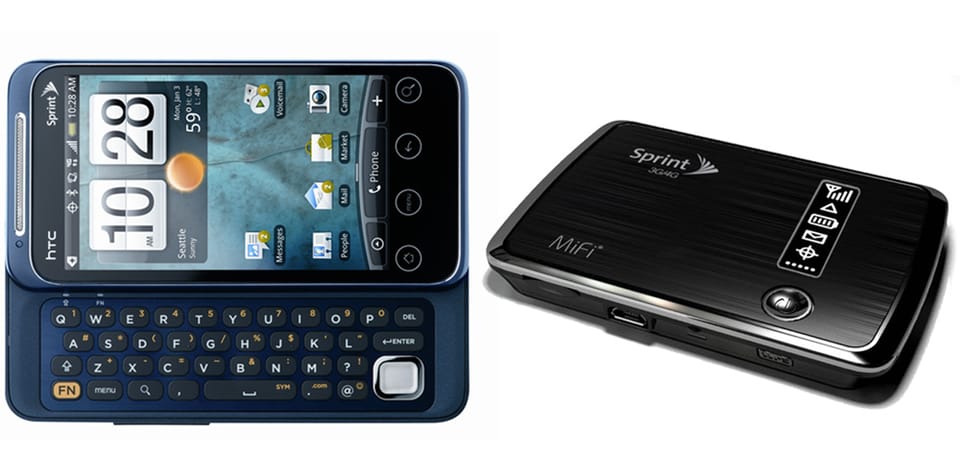Sprint Announces Two New 4G Devices

The EVO Shift has quite a few changes from its predecessor, for one, it now has a slide-out QWERTY keyboard. Honestly, I do not think this was a good idea. The phone looks clunkier and I’m someone who finds Swype as a superior alternative to the physical keyboard. In addition, the Shift’s screen size has been cut down to 3.6 inches from the 4.3 inch EVO. Unlike the original, the Shift does not have a front facing camera and has a lower 5 megapixel camera on the back, however it still maintains the 720p video capture resolution. Even the processor is a step down from the original with the Shift as it sports a 800 MHz processor when most smartphones now come with the standard 1 GHz. Finally, the device will come with Android 2.2 pre-installed, however since Android 2.3 was recently released, the phone will likely get that update as well.
I am quite disappointed with the HTC EVO Shift 4G as it has been nearly a year since the original EVO 4G was announced and yet there has been a loss in features in almost every aspect of this phone. Perhaps Sprint is trying to market it to a different audience, but it would have been great to at least keep some of the notable features of the EVO 4G instead of trying to just ride its coattails.
The second announcement, the MiFi 3G/4G Mobile Hotspot, is the next iteration of the MiFi 2200 Mobile Hotspot with a few new features. For starters, the device now sports an eInk display with indicators for battery life, signal strength, and number of connected devices. Since it now works on 4G, the device is capable of receiving up to 10 Mbps download speed (average 3-6 Mbps) which is significantly faster than its predecessor. Additionally, it sports location-based services such as GPSOne, xTRA, and a standalone GPS as well as a microSD slot with support up to 32GB. However, it can still only support five connected devices simultaneously, which is unfortunate since some phones can do more than that.
We are hoping to get out hands on both of these units and will bring you a review as soon as we can. In the meantime, visit Skatter Tech LIVE for more up to date information from CES 2011.
Links: Sprint.com